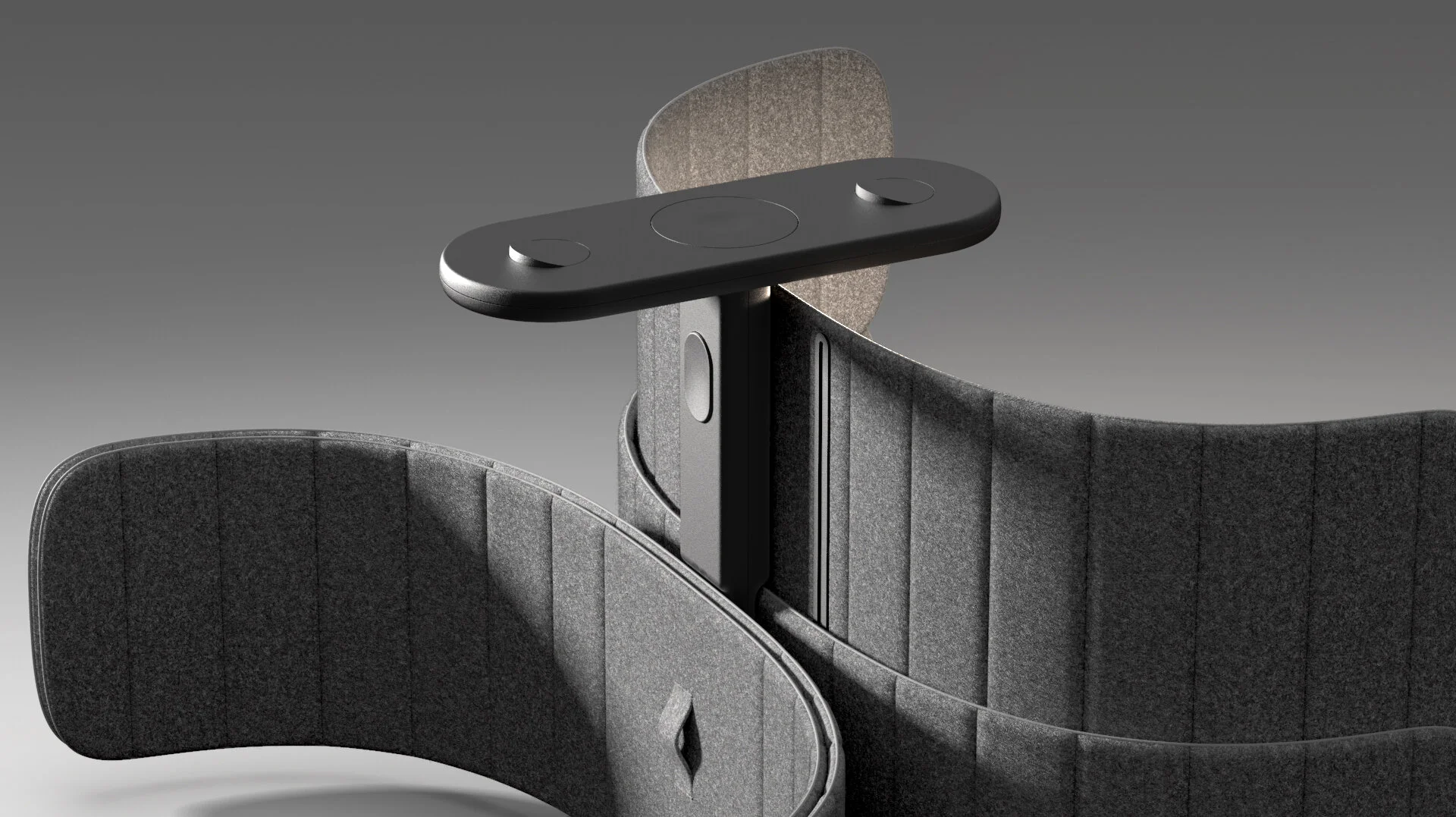
Panasonic live project
January 2021 (1 week)
1st place winning project
Hive is an adaptable work space for the home environment. It is a well-being tool for building physical separation, and encouraging a healthy cognitive separation between the home and work environments, helping people to appreciate both more.

“A blurring of boundaries between work and home that led to their feeling “always on“.”
In a 2022 UK survey, only 40% of home workers were found to have a dedicated work space, with the rest still working in shared areas or multiple spots around their home. This is especially prevalent in young and urban workers, where space within normally rented properties is often limited.
Through insight into work behaviour in a home environment, spacial distractions were seen to be a prominent factor affecting productivity, whilst the sense of feeling productive was seen to improve work satisfaction.
However, homeworkers also value being in their home environment and getting to appreciate the benefits of this. The aim of the project was to find a solution that tackles this balance.

Hive is an adaptable work space for the home environment. The felt panels wrap around the users work area, creating a defined physical space separation.


A timer within the stand enables the user (or users) to set a time period for which they would like to stay focused on their work and separated from the room and those around them. The head rotates 90 degrees and the magnetic contacts are exposed. The user then pulls the inner felt panel up into place to begin their period of focus.
The material barrier aims to reduce visual and auditory distraction. The down lamp which is concentrated within the users work area contributes to creating a feeling of environment separation, detaching the user from the space around them.

When the time ends, the magnetic contacts retract, causing the panels to drop, bringing the user back into the space around them.

This tangible separation aims to create a balance for the user within their home environment through building visual and spacial cues that trigger a work vs home cognitive response.



